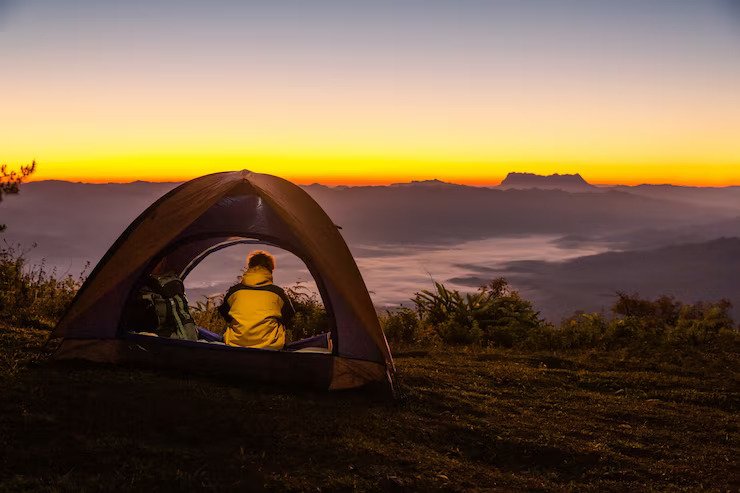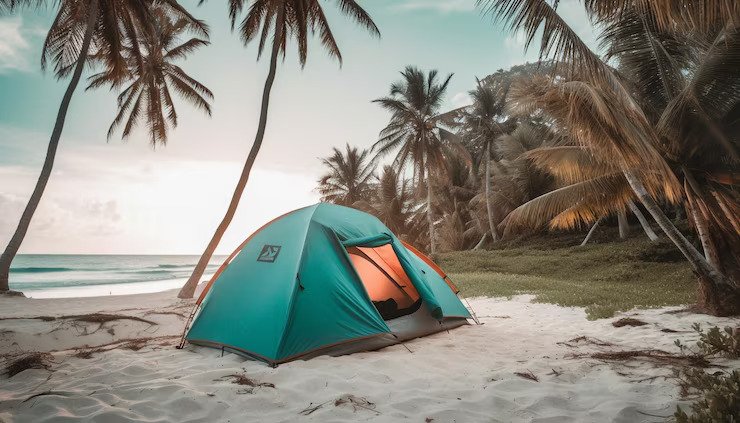Choosing Your Ideal Villa For A Dream Holiday!
BY Abdul Aziz May 24, 2023
Picture yourself lounging by a private pool, sipping a refreshing cocktail, and basking in the sun's warm embrace. The gentle rustle of palm leaves and the soothing sound of waves crashing against the shore create a symphony of serenity. The idyllic scene is not a figment of your imagination but a tantalizing glimpse into the world of villa holidays. Villas offer unparalleled privacy, comfort, and luxury and are the ultimate accommodation choice for discerning travelers seeking a dream holiday. This article gives you a trusty guide to selecting the perfect villa to transform your vacation fantasies into reality. Why Choosing An Ideal Villa Can Be Tough? The challenge of choosing the perfect villa lies in the various options available. The choices are endless, from cozy cottages to sprawling estates, from rustic charm to sleek modern design. It's like choosing your favorite flavor of ice cream from a selection of over 50 delectable flavors at an ice cream parlor – how can you pick just one? Another challenge in choosing the perfect villa is the fear of missing out. What if there's a better villa out there that you still need to discover? What if you make the wrong choice and end up regretting it? But more importantly, the challenge of choosing the perfect villa is also what makes it so rewarding. The thrill of discovery, the excitement of anticipation, and the satisfaction of finding the perfect villa are all part of the journey. And when you finally step into your villa, take a deep breath, and feel the weight of the world lift off your shoulders, you'll know that all the effort was worth it. So, sit back, relax, and let us take you on a journey into the world of villas. From choosing the right location to determining your needs and preferences, from researching and comparing villas to booking your dream abode, we'll provide you with all the tips and tricks you need to make your villa holiday dreams come true. Choosing The Location The location of your villa is a crucial factor that can make or break your holiday experience. A well-chosen location ensures easy access to attractions, activities, and amenities while providing a serene sanctuary to retreat after a day of adventure. But fear not, for we have scoured the globe to bring you the best locations for your dream villa holidays with your family. Tropical Islands: If you're seeking a slice of paradise, look no further than the world's tropical islands. From the turquoise waters of the Maldives to the lush landscapes of Bali, these islands offer a world of beauty and tranquility. And let's not forget the jewel of the Indian Ocean – Mauritius. Mauritius is a veritable paradise on Earth, where azure waters kiss powdery sands, and vibrant coral reefs teem with marine life. To book your dream villa in Mauritius, visit: https://www.bookmauritius-villas.com Mountain Retreats: Ascend to the heavens and immerse yourself in the awe-inspiring beauty of picturesque mountain ranges around the world. From the snow-kissed peaks of the Swiss Alps to the rugged grandeur of the Rocky Mountains, these lofty retreats offer a sanctuary of serenity and rejuvenation. Coastal Escapes: For those seeking a blend of sun, sea, and culture, a coastal escape might be just the ticket. From the sun-dappled terraces of the Amalfi Coast to the glittering shores of the French Riviera, these destinations are a feast for the senses. Urban Action: Immerse yourself in the pulsating heart of the most iconic cities, where art, history, and entertainment collide in a kaleidoscope of color and excitement. From the romantic boulevards of Paris to the neon-lit avenues of New York, these urban oases offer a dose of culture and excitement. Determining Your Needs And Preferences Before embarking on your villa-hunting quest, it's essential to identify your needs and preferences. After all, one traveler's dream villa might be another's nightmare! To ensure your villa is a perfect fit, consider the number of bedrooms, amenities, and budget. Are you seeking a love nest for two or a sprawling estate for a family reunion? Do you crave a state-of-the-art kitchen to create culinary masterpieces, or would you prefer a personal chef to cater to your gastronomic whims? And let's remember the all-important question: infinity pool or Jacuzzi? As you ponder these crucial considerations, remember that a villa is more than just a place to rest your head – it's a sanctuary where memories are made, laughter is shared, and dreams come to life. So, don't be afraid to let your imagination run wild and indulge in a little villa-fueled daydreaming! Researching And Comparing Villas With your needs and preferences in mind, it's time to dive into the exciting world of villa research. The internet is your oyster, with booking platforms, reviews, and compelling images of potential holiday homes. As you embark on this virtual voyage, watch for hidden gems and be prepared to flex your comparison muscles. Comparing villas is about finding the best deal and discovering the unique features that will elevate your holiday experience. Does one villa offer a mesmerizing ocean view while another boasts a lush garden teeming with tropical flora and fauna? Are you drawn to the sleek, modern design of one property or the charming, rustic charm of another? By carefully weighing the pros and cons of each villa, you'll be well on your way to finding your dream holiday abode. Conclusion Choosing the perfect luxury villa for your dream holiday is a thrilling journey of discovery, excitement, and anticipation. By carefully selecting the location, determining your needs and preferences, researching and comparing villas, and booking your chosen property, you'll be well on your way to creating unforgettable memories in your slice of paradise. So, what are you waiting for? Embark on your villa-hunting adventure today and unlock the door to a world of luxury and bliss. Read Also: Top 10 Famous Wonders Of India Batista Restaurant Las Vegas – Restaurant Info, Ratings & Reviews Best Time To Visit New York – Know All About New York Weather














